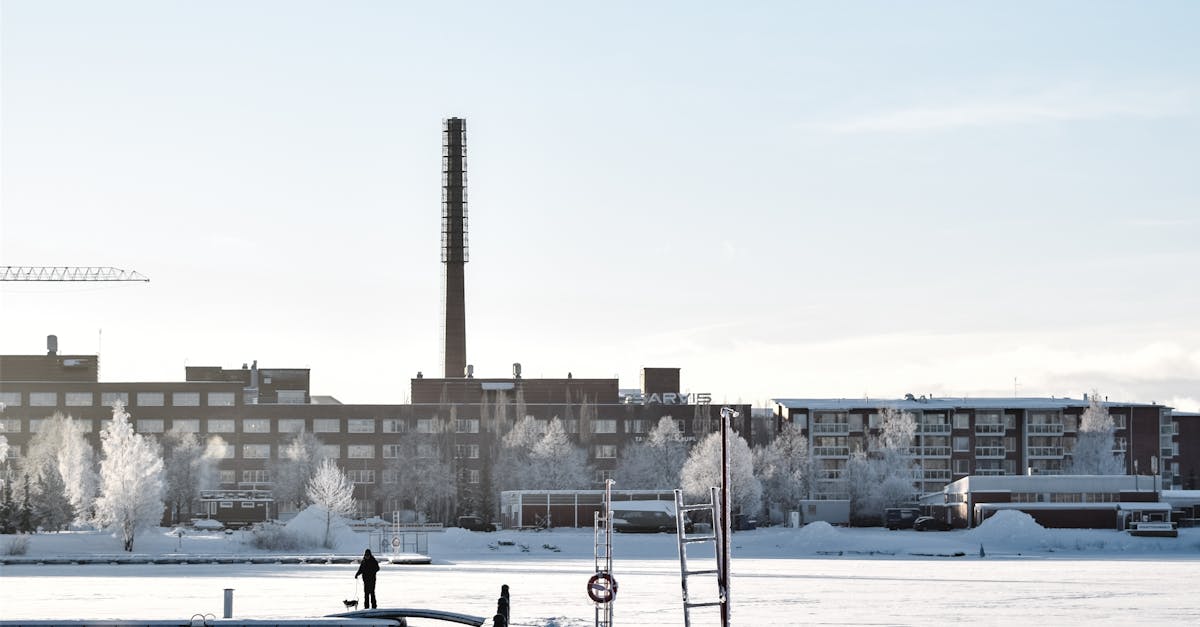
7 Essential Checks During Chiller Inspections
Reviewing Control Systems
Control systems act as the brain of any chiller system, regulating temperature and ensuring optimal performance. During inspections, a thorough review of these systems is crucial. Inspectors should evaluate the functionality of controllers, sensors, and actuators. Any discrepancies can lead to inefficient operation or a failure to maintain required temperatures. Regular calibration and updates are essential to guarantee that the control logic responds accurately to changes in demand.
In addition to checking for proper functioning, it is vital to assess the communication between different components of the control system. A well-integrated system enhances reliability and efficiency, while poor communication may indicate underlying issues. Identifying any faults early on aids in preventing more significant problems later. Inspecting the control software for updates and patches also contributes to maintaining system integrity. Regular reviews can significantly extend the lifespan of the chiller and improve overall energy efficiency.
Importance of Accurate Temperature Regulation
Maintaining the correct temperature within a chiller is crucial for optimal performance and efficiency. Temperature regulation directly impacts product quality, especially in industries like food and pharmaceuticals, where deviations can lead to spoilage and compliance issues. Accurate temperature control ensures that the chiller operates within designated parameters, reducing energy consumption and preventing unnecessary wear on equipment.
Regular monitoring of temperature settings also helps identify potential issues before they escalate. Fluctuations can indicate problems with refrigeration circuits, refrigerant levels, or control systems. Timely intervention not only safeguards the integrity of stored products but also prolongs the lifespan of the chiller, ultimately contributing to cost savings and reliability in operations.
Testing Safety Controls
Regular testing of safety controls is vital to ensure that refrigeration systems operate without risk to personnel or property. These controls are designed to automatically shut down the unit in the event of a malfunction. Verification involves checking pressure switches, temperature sensors, and emergency stop mechanisms. All components should be functioning correctly. Regular checks guarantee that safety measures respond as intended under fault conditions.
Compliance with industry safety standards is non-negotiable. Each safety control must meet specified criteria to ensure reliability. Documentation should detail each test conducted, providing a clear record of compliance and performance. Any discrepancies or failures in safety controls must be addressed promptly. This proactive approach minimises the potential for future incidents and assures effective operation.
Ensuring Compliance with Safety Standards
Compliance with safety standards is essential for the efficient operation of chillers. Regular inspections help to identify areas where regulations may not be met. It is important to ensure that all components of the system meet the required safety guidelines. Different organisations may enforce specific regulations, and familiarity with these requirements is critical for technicians.
Failing to adhere to safety standards can result in serious repercussions. Not only may this lead to financial penalties, but it can also compromise the safety of workers and the integrity of the facility. Implementing a thorough inspection regimen allows for early detection of non-compliance issues. This proactive approach ultimately enhances the reliability of the equipment and promotes a culture of safety within the workplace.
Monitoring Vibration and Noise Levels
Vibration and noise are key indicators of a chiller's operational health. Consistent monitoring allows for the early detection of mechanical issues that may compromise performance. Excessive vibration can often signal misalignment or imbalance within components, which can lead to increased wear and tear. On the other hand, unusual noises may hint at problems such as bearing failure or improper lubrication. Regular audits of vibration and sound levels can facilitate precision in identifying underlying issues before they escalate into costly repairs.
Incorporating vibration analysis and sound monitoring into routine inspections enhances predictive maintenance strategies. Using specialised equipment, technicians can gather data that reveals patterns over time. This information is invaluable for establishing baselines, thus making it easier to detect anomalies. By addressing any irregularities swiftly, operators can ensure optimal chiller performance and prolong the lifespan of the equipment. Investing resources in this area not only contributes to reliability but also supports energy efficiency objectives.
Detecting Potential Mechanical Issues
Identifying mechanical issues during chiller inspections is crucial for maintaining operational efficiency. Regular monitoring of components such as compressors, bearings, and fans helps to uncover signs of wear and tear. Technicians should look for abnormal vibrations, unusual noises, or excessive heat, which can indicate underlying problems. Any deviation from normal operating conditions warrants a closer examination to prevent more serious failures.
Operators can utilise vibration analysis and thermographic imaging as valuable tools in this process. These methods enable the early detection of misalignment, imbalance, or insufficient lubrication, which can lead to significant downtime if not addressed promptly. Documenting these observations aids in analysing trends over time, thereby enhancing maintenance strategies and ensuring the longevity of the chiller system.
FAQS
What are the essential checks to perform during chiller inspections?
The essential checks include reviewing control systems, testing safety controls, and monitoring vibration and noise levels.
Why is accurate temperature regulation important during chiller inspections?
Accurate temperature regulation is crucial as it ensures optimal performance, energy efficiency, and prevents potential product spoilage.
How do safety controls impact chiller performance?
Safety controls are vital for preventing accidents and ensuring the chiller operates within safe parameters, thus safeguarding both the equipment and the surrounding environment.
What signs indicate potential mechanical issues during inspections?
Signs such as unusual vibrations, excessive noise, or fluctuating temperatures can indicate potential mechanical issues that need addressing.
How often should chiller inspections be conducted?
Chiller inspections should ideally be conducted regularly, typically every six months to a year, depending on usage and manufacturer recommendations.
Related Links
Review of Best Practices in Chiller ServicingHistorical Development of Maintenance Practices for Chillers
Roundup of Common Inspection Techniques for Air Cooled Chillers
Why Neglecting Chiller Inspections Can Lead to Failures
Why Regular Maintenance is Crucial for Chiller Performance
What to Look for During Chiller Inspection